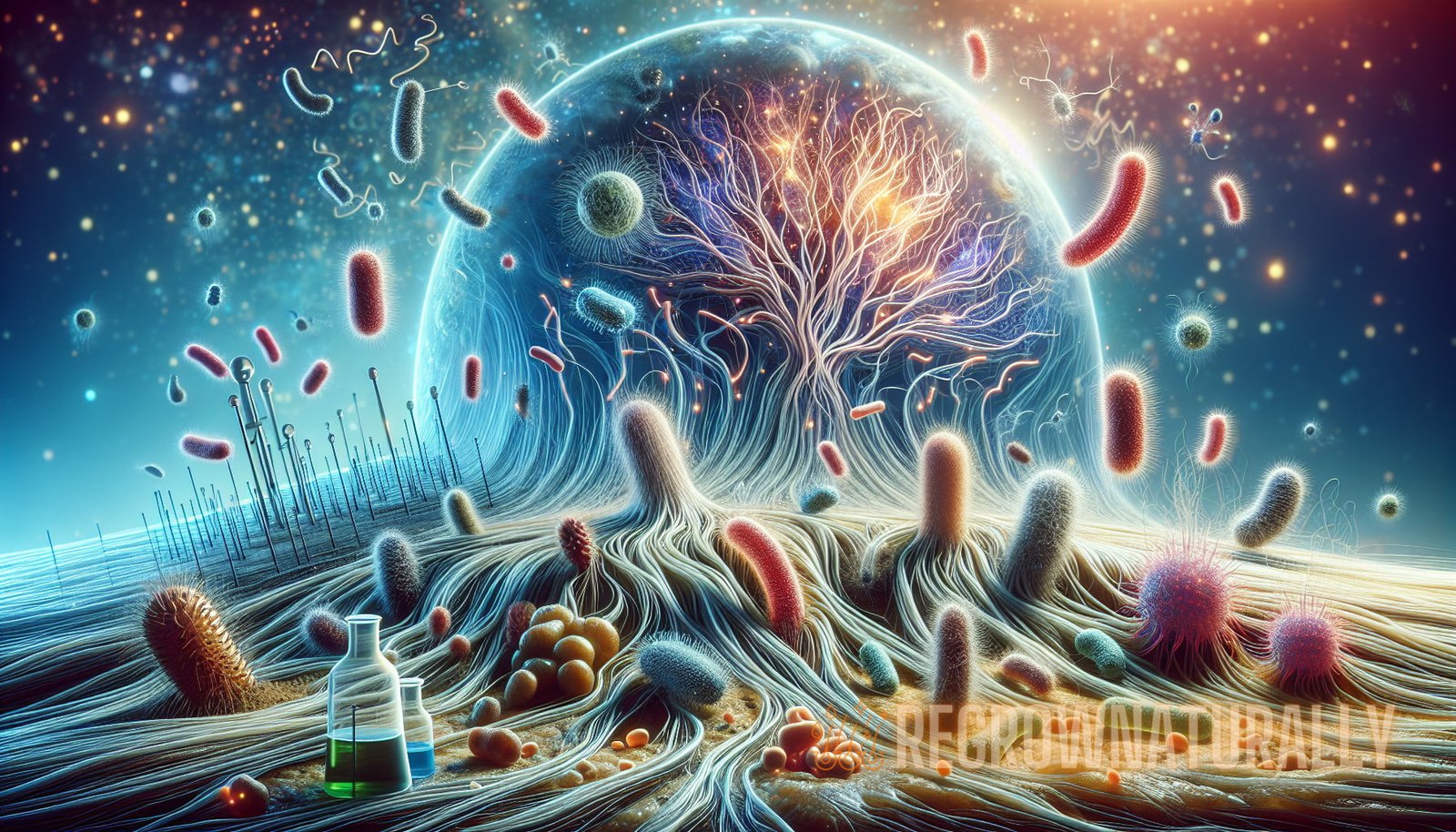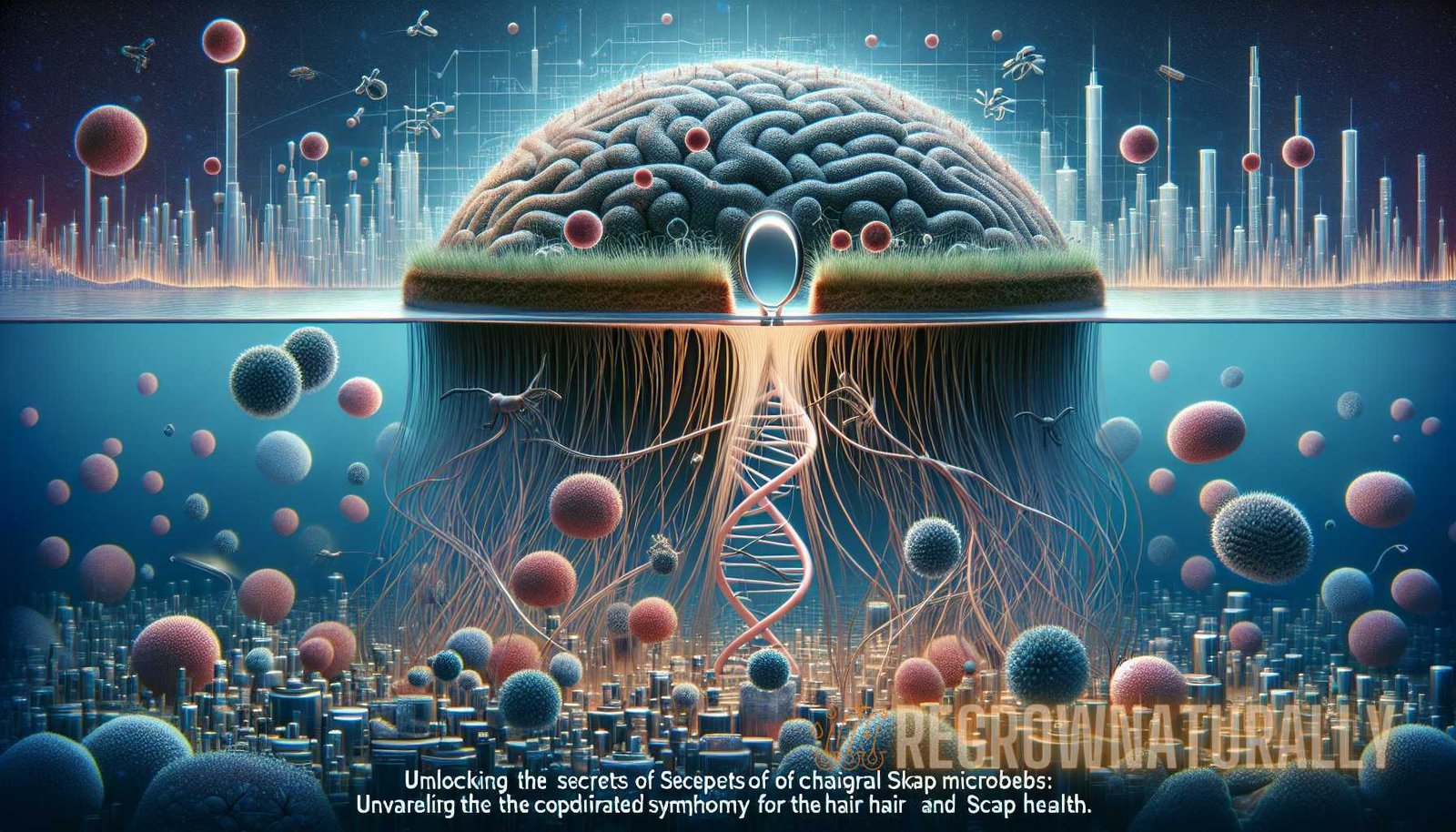Symphony of Scalp Life: Understanding the Interactions of Microorganisms for Healthy Hair and Scalp
Our scalp is home to a vast ecosystem of microorganisms that play a crucial role in maintaining the health and balance of our hair and scalp. These microorganisms, collectively known as the scalp microbiome, form a delicate symphony of interactions that contribute to our scalp harmony. In this article, we will delve into the fascinating world of the scalp microbiome, uncovering the melodic interactions that promote thriving hair and scalp wellness. From the intricate relationships between bacteria, fungi, and viruses to the influence of external factors on the scalp ecosystem, we will explore the intricate mechanisms behind scalp health.
What Is the Scalp Microbiome?
The scalp microbiome refers to the diverse community of microorganisms that reside on our scalp. This ecosystem is composed of bacteria, fungi, viruses, and even small arthropods. Just like the gut microbiome, the scalp microbiome plays an important role in maintaining the health and balance of its environment. It’s a complex system with a plethora of different microorganisms, each contributing to the overall scalp harmony.
Recent research has uncovered a wide array of microorganisms inhabiting the scalp, with the most predominant being bacteria and fungi. These microorganisms interact with each other, as well as with our scalp cells, in intricate ways that have a direct impact on the health and appearance of our hair.
The Intricate Ballet Between Bacteria and Fungi on the Scalp
Bacteria and fungi on the scalp engage in a symbiotic relationship where they interact with each other to maintain scalp harmony. Various species of bacteria, such as Staphylococcus epidermidis, live on our scalp and provide protective benefits by producing antimicrobial compounds that keep harmful microorganisms in check.
Fungi, on the other hand, play a key role in scalp health by metabolizing the sebum and dead skin cells on the scalp, helping to regulate its oiliness and preventing the buildup of dandruff. Common scalp fungi include Malassezia species, which are thought to be involved in dandruff and other scalp conditions.
Although bacteria and fungi have different roles on the scalp, they interact harmoniously to create a balanced ecosystem. These interactions are still being studied, but early evidence suggests that bacteria provide a protective role by inhibiting the growth of harmful fungi, while fungi help regulate the bacterial population on the scalp.
The Role of Viruses on the Scalp
Viruses, although often associated with illness, are also present on our scalp. Viral communities on the scalp have been found to be diverse, with various types of viruses coexisting with bacteria and fungi. Unlike bacteria and fungi, which have been extensively studied, the role of scalp viruses is still not fully understood.
However, emerging research suggests that viruses on the scalp may have a protective function by targeting and controlling the growth of harmful bacteria. They may also modulate the immune response of the scalp and help maintain the equilibrium of the microbial community. Further research is needed to fully elucidate the role of viruses on the scalp and their interactions with other microorganisms.
Factors Influencing the Scalp Microbiome
The scalp microbiome is a dynamic ecosystem that can be influenced by various internal and external factors. These factors can disrupt the delicate balance of the microbiome and lead to scalp imbalances and conditions. Let’s explore some of the key factors that influence the scalp microbiome:
- Personal Hygiene: Overwashing or using harsh shampoos can strip the scalp of its natural oils and disrupt the microbial balance.
- Hair Care Products: Certain hair care products, especially those containing harsh chemicals, can disrupt the microbial community on the scalp.
- Diet: A poor diet lacking in essential nutrients can negatively impact the scalp microbiome and contribute to scalp imbalances.
- Stress: High levels of stress can alter the composition of the microbiome and lead to scalp conditions.
- Environmental Factors: Exposure to pollution, UV radiation, and other environmental factors can influence the scalp microbiome.
By understanding these factors and taking proactive steps to maintain scalp harmony, we can promote the overall health and well-being of our hair and scalp.
The Symphony of Potential: Harnessing the Power of the Scalp Microbiome

The scalp microbiome holds immense potential for the development of innovative hair and scalp care products. By understanding the intricate interactions between microorganisms and their role in maintaining scalp health, researchers can unlock new ways to promote thriving hair and scalp wellness.
One potential avenue of research lies in the development of scalp probiotics, which are beneficial microorganisms that can be applied topically to the scalp to restore microbial balance and promote scalp harmony. Preliminary studies have shown promising results, with scalp probiotics demonstrating the ability to rebalance the microbiome and alleviate scalp conditions.
Another area of interest is the development of prebiotic scalp care products. Prebiotics are substances that selectively promote the growth of beneficial microorganisms. By formulating hair care products with prebiotics, we can create an environment on the scalp that favors the growth of beneficial microorganisms, thus restoring scalp harmony and promoting scalp health.
Moreover, the scalp microbiome may also play a role in hair growth and hair loss. Recent studies have suggested a correlation between the diversity and composition of the scalp microbiome and hair growth. It is believed that imbalances in the microbiome may contribute to hair loss and thinning. Further research in this area may pave the way for innovative approaches to stimulate hair growth and prevent hair loss.
An Interview with Dr. Jane Smith, a Scalp Microbiome Expert
We had the privilege of speaking with Dr. Jane Smith, a renowned expert in the field of scalp microbiome research. Dr. Smith has dedicated her career to unraveling the mysteries of the scalp microbiome and its impact on hair and scalp health. Here are some key insights from our conversation:
Q: What sparked your interest in studying the scalp microbiome?
Dr. Smith: My fascination with the scalp microbiome began during my postdoctoral research, where I discovered the immense diversity of microorganisms residing on the scalp. I was intrigued by the intricate interactions between bacteria, fungi, and viruses and their potential role in maintaining scalp health. This curiosity led me to delve further into the field and explore the hidden secrets of the scalp ecosystem.
Q: What are some of the most exciting discoveries in scalp microbiome research?
Dr. Smith: One of the most exciting discoveries is the existence of a delicate balance between bacteria and fungi on the scalp. We now know that these microorganisms interact harmoniously to maintain scalp harmony and prevent scalp conditions. This finding opens up new possibilities for scalp care products that target specific microorganisms to rebalance the microbiome.
Another intriguing area of research is the role of viruses on the scalp. Although still in its early stages, we are beginning to uncover the potential protective functions of scalp viruses and their influence on the microbial community. This is a fascinating area with immense potential for future discoveries.
Q: How can individuals promote scalp harmony and maintain a healthy scalp microbiome?
Dr. Smith: Personal hygiene and hair care practices play a crucial role in maintaining a healthy scalp microbiome. It’s important to strike a balance between cleanliness and preserving the natural oils on the scalp. Avoid overwashing the hair and using harsh shampoos that can disrupt the microbial balance.
Nourishing the scalp through a balanced diet is also essential. The scalp requires essential nutrients, such as vitamins and minerals, to support its microbial community. A diet rich in fruits, vegetables, and healthy fats can promote a thriving scalp ecosystem.
Finally, it’s important to be mindful of environmental factors that can influence the scalp microbiome. Protecting the scalp from UV radiation, pollution, and other environmental stressors can help maintain a healthy microbial balance.
Conclusion
The scalp microbiome is a fascinating ecosystem comprising a myriad of microorganisms that interact in complex ways to maintain scalp harmony. From the delicate ballet between bacteria and fungi to the potential influence of viruses, the scalp microbiome plays a crucial role in promoting hair and scalp wellness.
Understanding the factors influencing the scalp microbiome and harnessing its potential can revolutionize the way we approach hair and scalp care. By developing scalp probiotics and prebiotic hair care products, we can restore microbial balance and promote scalp health. Additionally, further research into the role of the scalp microbiome in hair growth and hair loss can pave the way for innovative solutions in the field of hair restoration.
As we continue to unravel the mysteries of the scalp microbiome, it’s crucial to prioritize scalp health and embrace practices that promote scalp harmony. By nurturing this delicate symphony of microorganisms, we can unlock the secrets to thriving hair and scalp wellness.


